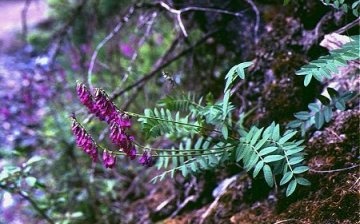Penny plant (red root) - useful properties
The penny (red root) was so named because of the pink-red color of the decoction from its root, which is what distinguishes this type of penny from others. The red root is widely used in folk medicine, with its help many diseases are treated, and tea from the red root is considered a real panacea.
The kopeck plant has a root that is more than 1.5 cm long and more than 10 cm thick. No other plant in Siberia has such a large root. By the way, the kopeck plant grows in northwestern Altai, in subalpine meadows, in the upper belt of the mountains. The flowers of this plant resemble moths, and the legumes resemble coins (hence the second version of the name of the penny).
The use of a penny
- for the treatment of anemia;
- with diarrhea;
- to cleanse the capillaries;
- for the treatment of male diseases - impotence, prostatitis;
- for the treatment of organs of the urinary system;
- to normalize the menstrual cycle, with heavy menstruation;
- to normalize the nervous system;
- as a general tonic (strengthens the cardiovascular system by stimulating the heart muscle; normalizes the work of the gastrointestinal tract);
- the content of a large amount of vitamin P helps to strengthen the walls of the capillaries;
- relieves fatigue;
- increases physical endurance.
Red root tea is recommended to be drunk daily to improve overall health, but it is worth remembering that, like all medicinal products, it is not recommended to exceed the tea consumption rate. Locals add milk to tea from a penny - it helps to better assimilate the plant's nutrients.



